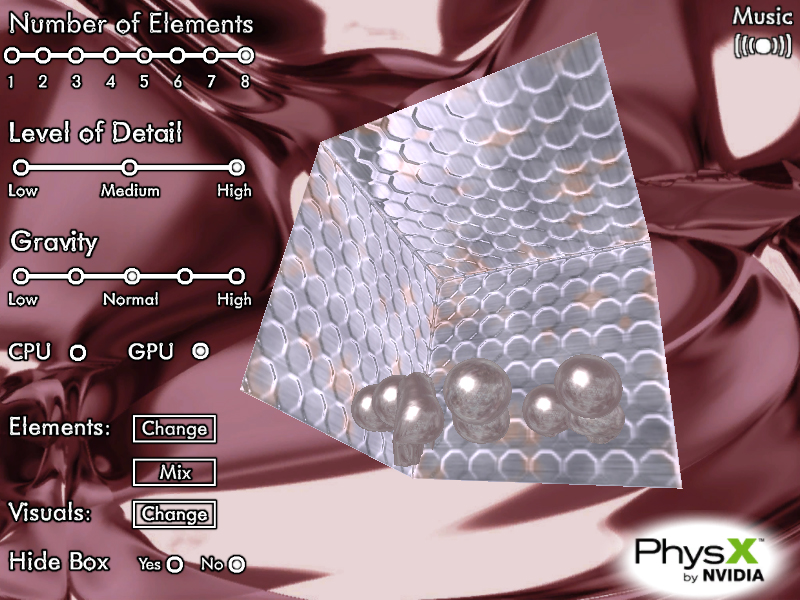Soft Body demo
The Great Kulu, a tech demo by Kenneth Bugeja, demonstrates the use of soft-body PhysX technology in a real game play environment and is based on the UT3 3D-Engine.
The demo focuses on the behaviour of a soft-and-squishy creature, along with its torn pieces. It's all simulated on the GPU with the aid of PhysX and uses no pre-scripted animation.

Despite the promise of a "real game play" test, readers should be aware that the Soft Body demo is tailored to demonstrate the value of NVIDIA's PhysX technology. The advantage of PhysX in real-world gaming titles may vary.
| NVIDIA Soft Body - five elements, medium detail | |||
|---|---|---|---|
| GeForce 8800 GT (GPU PhysX) | GeForce GTX 260 (CPU PhysX) | GeForce 8800 GT (CPU PhysX) | GeForce GTX 260 (GPU PhysX) |
| 66.68 | 50.92 | 52.23 | 66.68 |
| NVIDIA Soft Body - eight elements, high detail | |||
|---|---|---|---|
| GeForce 8800 GT (GPU PhysX) | GeForce GTX 260 (CPU PhysX) | GeForce 8800 GT (CPU PhysX) | GeForce GTX 260 (GPU PhysX) |
| 40.64 | 13.73 | 13.88 | 49.96 |
No real surprises here, and as you'd expect, the demo achieves a far greater rate of frames per second when the GPU - as opposed to the CPU - is asked to do the PhysX calculations.
What's interesting is that at high detail, the raw power and throughput of the NVIDIA GeForce GTX 260 is able to offer a 70 per cent increase in performance when compared to PhysX running on a 3.2GHz quad-core CPU.









